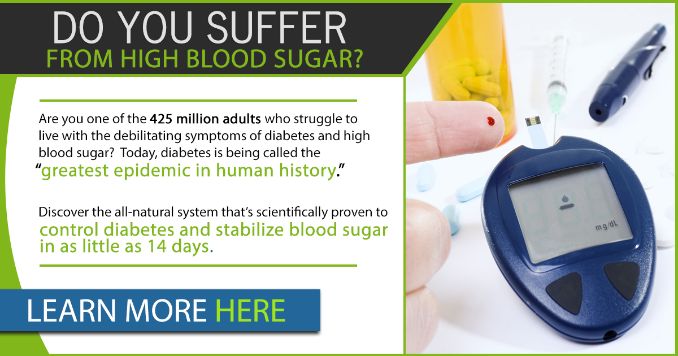
Type 2 diabetes can often be prevented and managed through natural approaches. Exploring Natural Ways to Prevent and Treat Type 2 Diabetes, such as maintaining a balanced diet, engaging in regular exercise, and adopting stress-reducing practices, offers safe, cost-effective, and impactful alternatives to traditional treatments.
What Is Type 2 Diabetes?
Type 2 diabetes is a metabolic disorder that results in high blood sugar due to insulin resistance or insufficient insulin production. Furthermore, according to the National Institutes of Health (NIH), this condition impacts more than 382 million people worldwide. Previously, type 2 diabetes was known as adult-onset diabetes. However, with the increasing number of children being diagnosed with type 2 diabetes in recent years, the terminology has evolved to reflect this shift.
What Are the Symptoms of Type 2 Diabetes?
It isn’t uncommon for people to have type 2 diabetes for years without knowing. Many of the symptoms can mask other conditions. These are some of the most common symptoms of type 2 diabetes:
- Frequent urination
- Feeling unusually thirsty
- Weight loss
- Fatigue
- Visual disturbances including blurred vision and sensitivity to light
- Cuts, bruises, and wounds taking longer to heal
- Recurrent yeast infections
- Increased hunger
- Numbness in fingers and toes
- Mood swings

What Causes Type 2 Diabetes?
Knowing the causes and risk factors for type 2 diabetes is an important step to prevention. The following is a list of causes for type 2 diabetes:
1. Genetics and family history
If close blood relatives of yours have been diagnosed with diabetes — type 1 or type 2 — you may be at risk. While diabetes is hereditary, family history does not ensure that you will have diabetes.
2. Sedentary lifestyle
A 2013 study, published in the International Journal of Behavioral Nutrition and Physical Activity, found that the more time a person spends sitting during the day, the more likely he or she will be diagnosed with type 2 diabetes.
3. Unhealthy eating
A diet high in saturated fat and refined carbohydrates can lead to type 2 diabetes. Similarly, a diet low in fiber and essential nutrients can increase your risk of developing the condition.
4. Being overweight or obese
According to registered nurse Lisa Leontis, “Being overweight makes it more likely that you’ll become insulin-resistant and can also lead to many other health conditions.”
5. Carrying belly fat
If you carry extra weight around the midsection, you have a greater risk of developing type 2 diabetes than if you’re weight is more evenly distributed in the body.
6. Your race
Scientists are not sure why, but Native Americans, African Americans, Asian Americans and Hispanics are at the greatest risk for developing type 2 diabetes.
7. Having a previous diagnosis of gestational diabetes
Women who are diagnosed with gestational diabetes when they’re pregnant are at greater risk of developing type 2 diabetes afterward. Also, when a woman gives birth to a child weighing more than 9 pounds, she is at risk.
8. Your age
As you get older, you are more likely to develop type 2 diabetes. After age 45, your risk becomes greater.
9. Being diagnosed with polycystic ovarian syndrome
Women who have polycystic ovarian syndrome are more likely to be diagnosed with type 2 diabetes.

Natural Ways to Prevent the Onset of Type 2 Diabetes
If any of the above risk factors look familiar to you, don’t worry. There are ways to decrease your chances of being diagnosed with type 2 diabetes:
1. Get moving
A sedentary lifestyle is the enemy of good health. If you don’t get at least 30 minutes a day of heart-pounding movement, make a change. Start your morning with a brisk walk or a line-dancing video. Bring your gym shoes with you to work so you can climb stairs during your lunch hour. You can also hit the fitness center on your way home. Increasing your activity level is one of the most important ways you can improve your overall health and decrease your risk of developing type 2 diabetes.
2. Eat better
If you’ve caught yourself wishing you could buy a front-of-the-line pass for the fast-food drive-through on your way home from work, there may be a problem with your diet. Dark green vegetables, fruits, whole grains, and lean proteins should be at the center of your meal plan. Never drink sodas and keep sweets to a minimum. Aim to consume less than 20 grams of refined sugar each day. The way you eat directly affects your health and wellness. Buy those vegetables and make sure they don’t spoil on the shelf in your refrigerator. Value your health enough to eat well.
3. Drop a few pounds
If you’re overweight, especially if you carry most of your weight in your midsection, do what you can to lose the weight. Lots of people at high risk for diabetes have had success with the ketogenic diet. Check out our post about this popular diet here. Others find that just cutting out sweetened drinks and replacing refined carbohydrates with whole grains will help them lose weight. The bottom line is that being overweight is one of the biggest risk factors for developing type 2 diabetes. Avoid this preventable disease by making sure you’re at your ideal weight.
4. Get enough rest and reduce your stress levels
When you aren’t logging enough hours on the pillow each night, your body produces extra cortisol. Cortisol is known as the stress hormone. Too much cortisol in the body will elevate your blood sugar. If you’re not getting enough sleep or operating in a high-stress environment consistently, your blood sugar levels may be consistently high, making you more likely to develop type 2 diabetes. Lower your risk by getting seven to nine hours of sleep each night.
5. See your doctor annually
Often, risk factors and health conditions aren’t diagnosed because people don’t go in for regular, annual checkups. See your doctor at least once a year to have bloodwork done, check your glucose levels and get a physical. A good doctor will help you keep track of your risk factors and stay on top of any health conditions you may be facing.

Natural Ways to Treat Type 2 Diabetes
First of all, if you are diagnosed with type 2 diabetes, or you think you may have it, make sure you find an excellent doctor or health care practitioner to help you in your quest for better health. Then, along with your doctor, consider a natural approach to treatment. Here are some excellent natural ways to treat type 2 diabetes:
1. Cinnamon
A study in the Journal of the American College of Nutrition showed that cinnamon stabilizes the blood sugar by mimicking insulin in the body. The researchers concluded that cinnamon affects the body’s endocrine system in the same way as insulin injections. Ceylon cinnamon, also known as true cinnamon, is the type of cinnamon that is particularly effective in treating type 2 diabetes.
2. Fenugreek
Fenugreek is a plant that grows well in India. The seeds of the fenugreek plant are often ground and used in Indian foods and curries. Fenugreek seeds have been studied and shown to help reduce blood glucose levels, increase the number of insulin receptors contained in red blood cells and slow the rate of carbohydrate absorption in the body. Fenugreek is particularly effective and should be used with caution and only under the care of your health care provider. Pregnant women should not use fenugreek. Also, fenugreek can decrease the effectiveness of certain prescription medications.
3. Fig leaves
Many diabetics have found that they need less insulin when they are taking fig leaf extract. It is often advised for diabetics to take the fig leaf extract early in the morning with their breakfasts. Patients can take it by the spoonful or make a tea from dried fig leaves.
4. Nigella sativa
Nigella sativa is an age-old remedy for all sorts of conditions. It has been used for centuries to treat diabetes. Nigella Sativa is also known as “black seed” or “black cumin.” The oil of Nigella sativa is the potent medicine. Most diabetics find that it helps to take the oil several times a day. However, use caution with this particular plant. It is toxic in high doses and should only be used under the care of your medical practitioner.
5. Bitter melon
Bitter melon is technically a fruit and often classified as a gourd. The scientific name for bitter melon is Momordica charantia. It has been used for centuries in Chinese medicine. It is also often used in Asian cuisine. Bitter melon contains a compound called charantin.
Charantin has been shown to reduce blood glucose levels. There is also an enzyme found in bitter melon that helps the body to use glucose more effectively. Many diabetics have been able to decrease, and in some cases, eliminate their use of prescription medications after drinking bitter melon tea each day with their meals.
Use caution, however, as bitter melon is very potent. Using too much can cause a drastic reduction in blood sugar called hypoglycemia. Pregnant women are also not advised to use bitter melon. Always use this treatment under the care of your medical practitioner.

Consider Natural Prevention and Treatment for Type 2 Diabetes
The growing number of individuals with type 2 diabetes is of significant concern worldwide. The fact remains that type 2 diabetes is almost always preventable and treatable. Talk with your doctor about natural prevention and treatment for type 2 diabetes.
For your guide to managing high blood sugar, check out our 14-Day Diabetes Control Quick Start Program, here!

